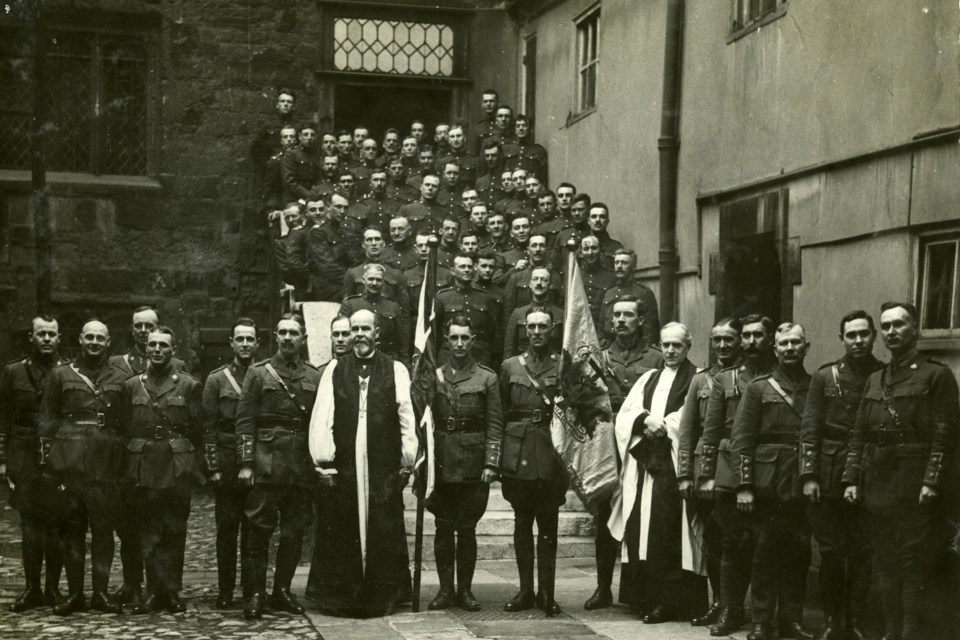Another Remembrance Day is fast approaching. It is a time to remember all those who have served, and all those who lost their lives, in times of war and in peacekeeping operations. It is also interesting to reflect back 100 years to Nov. 11, 1919, the first anniversary of the end of one of the worst cataclysms in human history, the First World War.
The war had been a searing experience. Hundreds of young men from across Central Alberta had gone overseas to fight “for King and Country." By the time the Great War was over, there were 55 names on the Innisfail and district honour roll. A great many others returned home with significant wounds and illnesses, of the body and/or the mind.
The economy was devastated. There were not enough jobs for the returning veterans, even if they were well enough to work. Because of the massive spending for the war effort, Canada was hit with the highest inflation in history. Savings were wiped out. More businesses went bankrupt, or else quietly closed their doors, thereby increasing unemployment to even higher levels.
Local farmers struggled, not only because of rapidly increasing costs, but also because there were a series of poor harvests. Winter came early and stayed late. Temperatures plunged to some of the lowest levels recorded since the brutal winter of 1906-1907. The poor weather deepened the feelings of misery and hardship.
People could not turn to the government for relief. Governments at all levels struggled with enormous debts incurred during the war and the sharp reductions in tax revenue with the collapsing economy. The main sources of support were family and friends, and the Patriotic Fund, a national charity created to provide assistance to veterans and their families.
Another major source of support and assistance was the Great War Veterans Association (forerunner of the Royal Canadian Legion). It was an organization of veterans helping comrades and their families. An Innisfail branch was formed not long after the war came to an end.
Fundraising efforts also soon commenced to create an appropriate memorial to those who had served and in particular, those who had lost their lives in the Great War. The first completed project was a memorial community hall in Penhold. The initiative had been spearheaded by the Penhold branch of the Women’s Institute. The hall officially opened with a Thanksgiving supper and Military Ball on Oct. 31, 1919 (Halloween night). A large crowd was in attendance of local veterans, dignitaries and members of the public.
In Innisfail, there was also a Halloween Ball, organized by the Innisfail Concert Society and with the profits going to the G.W.V.A. memorial fund. The event was a success and earned a profit of $167, no small feat given the severe economic conditions of the time.
There were plans to have a special exhibit of “war trophies” – artifacts and souvenirs of the war -- at the Innisfail Presbyterian Church Hall. However, there were logistical problems and the proposed exhibit was cancelled in early November.
On the morning of Nov. 11, the federal government decreed a national two minutes of silence at the 11th hour of the 11th day of the 11th month, the exact time that the official Armistice came into effect.
The Innisfail branch of the G.W.V.A. held a special dinner, dance and fundraising event in the evening at the local Opera House. The hall was extensively decorated with the national Ensigns, the Union Jack and the flags of the Allies from the war. There was a special exhibit of the regimental colours of the 187 Battalion, which had been officially dedicated at a special ceremony in Innisfail in June 1916. Next to the colours was the first recruiting sign which was used at the Innisfail recruiting station during the raising of the 187 Battalion.
Also on display were a number of war souvenirs brought back to Innisfail by returning veterans. In addition, there were a number of photographs of the training camps and war zones overseas, as well as of the local units from the war such as the 35 Central Alberta Horse, 12 Canadian Mounted Rifles, and 89 Battalion as well as the 187.
The Nov. 11 event was considered a success with a good sized crowd in attendance. After the expenses were paid, there was a profit of $92.95 to support the activities of the Innisfail G.W.V.A. and to add to the local memorial fund.
Michael Dawe is a longtime respected City of Red Deer and regional historian.



